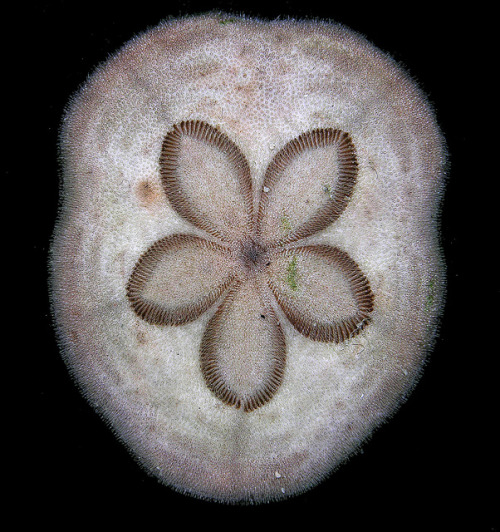#artoura
IRREGULAR SEA URCHIN(Clypeaster cf humilis)©artour_a
Egyptian Red Sea
Sea urchinsorurchins are small, spiny, globular animals which, with their close kin, such as sand dollars, constitute the class Echinoidea. They inhabit all oceans. Their shell, or “test”, is round and spiny, typically from 3 to 10 centimetres (1.2 to 3.9 in) across. Common colors include black and dull shades of green, olive, brown, purple, and red. They move slowly, feeding mostly on algae. Sea otters, wolf eels, triggerfish, and other predators feed on them. Their “roe” (actually the gonads) is a delicacy in many cuisines.
Like other echinoderms, sea urchins are bilaterans. Their early larvae have bilateral symmetry but they develop fivefold symmetry as they mature. This is most apparent in the “regular” sea urchins, which have roughly spherical bodies, with five equally-sized parts radiating out from the central axis. Several sea urchins, however, including the sand dollars, are oval in shape, with distinct front and rear ends, giving them a degree of bilateral symmetry. In these urchins, the upper surface of the body is slightly domed, but the underside is flat, while the sides are devoid of tube feet. This “irregular” body form has evolved to allow the animals to burrow through sand or other soft material.
Fact Source:http://en.wikipedia.org/wiki/Sea_urchin
Other Photos you may like:
Bubbletip Anemone with Clownfish
Post link
SLOTH MOTH (Cryptoses choloepi) ©artour_a
A variegated three-toed sloth (Bradypus variegates) complete with a sloth moth (Cryptoses choloepi), an insect which lives almost its entire adult life in the fur of a sloth.
Sloth moth is a generic term used to refer to coprophagous moths which have evolved to exclusively inhabit the fur of sloths and to use sloth dung as a substrate for the early stages of reproduction.
Sloth moths are considered to get nutrients from the secretions of the sloths’ skin and/or the algae present on the fur as well as protection from avian predators.
Some three-toed sloths have been recorded carrying more than 120 moths in the fur of an individual sloth. Two-toed sloths are recorded as harbouring lower populations. Several different moth species may coexist on the same animal.
Fact Sources:
http://en.wikipedia.org/wiki/Sloth_moth
http://carmenohio.deviantart.com/art/Sloth-Moth-91756656?q=sort%3Atime+gallery%3Acarmenohio&qo=2
Other photos you may enjoy:
Brown-Throated Three-Toed Sloth
Post link


